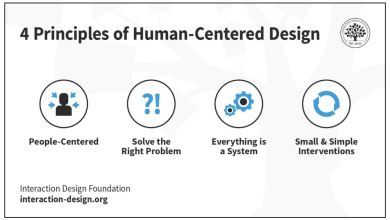
Last mile delivery, the crucial final stage of the supply chain where goods reach the end customer, is vital for customer satisfaction and brand loyalty, especially with the growth of e-commerce. However, it faces challenges like high costs and demands for speed and sustainability. Artificial Intelligence (AI) offers solutions to optimize this process. This article explores AI’s applications in last mile delivery, its benefits and challenges, future trends, case studies, stakeholder impacts, and ethical considerations.
Understanding the Critical Link: Defining Last Mile Delivery and its Significance in the Supply Chain
Last mile delivery is the final step in the supply chain, connecting transportation hubs to customers. This stage is the direct interaction point with the customer, significantly impacting their satisfaction and brand perception. Inefficiencies here can negatively affect the entire customer experience.
Despite being the shortest distance, last mile delivery can account for over 50% of total supply chain costs in B2C scenarios. This is due to factors like frequent stops, urban congestion, and demands for rapid delivery. Optimizing routes for individual deliveries across diverse geographies further adds to these costs and complexities. The high costs and impact on customer experience highlight the need for AI-driven solutions to streamline operations.
AI Transforming the Final Leg: Current Vendor-Neutral Applications in Last Mile Delivery
AI is being used in various aspects of last mile delivery. Route optimization uses real-time data to plan efficient routes, minimizing travel time and fuel use. Predictive analytics forecasts demand using historical data to optimize resource allocation and provide accurate ETAs. Dynamic scheduling adjusts schedules in real-time based on disruptions.
Autonomous delivery vehicles and drones use AI for navigation and efficient delivery, especially in congested or remote areas. AI-powered chatbots and virtual assistants improve customer communication with real-time updates and support. Other applications include address validation to minimize failed deliveries, load optimization for efficient vehicle loading, and fraud detection to prevent fraudulent activities. These diverse uses demonstrate AI’s potential to transform last mile delivery.
The Advantages Unveiled: Benefits of Using AI in Last Mile Delivery
AI in last mile delivery offers numerous benefits. Improved efficiency through route optimization leads to faster deliveries. This also results in cost reduction via decreased fuel consumption and fewer failed deliveries. Autonomous solutions can further lower labor costs.
Customers benefit from more accurate ETAs, real-time tracking, and flexible delivery options. AI-powered communication enhances customer satisfaction. AI also contributes to sustainability by optimizing routes and enabling eco-friendly delivery methods. Studies show significant improvements like a 30% reduction in delivery times and a 40% decrease in operational costs with AI.
Overcoming the Obstacles: Challenges and Limitations of AI Implementation
Implementing AI in last mile delivery faces several challenges. Existing infrastructure, especially in rural areas, may not support autonomous vehicles and drones. The evolving regulatory landscape for autonomous systems can be restrictive. Technological integration complexity, ensuring data quality for AI models are crucial.
Security and privacy concerns are significant with autonomous systems and data collection. Gaining public acceptance for autonomous delivery requires addressing concerns about job displacement and safety. Achieving real-world validation of AI systems can be difficult.
The Horizon of Innovation: Potential Future Trends and Advancements in AI for Last Mile Delivery
Over the next few years, we will likely see increased adoption of autonomous vehicles, drones, and AI algorithms for optimization. Integration of AI with Internet-of-Things and blockchain can enhance tracking, security, and transparency. More personalized and on-demand delivery services driven by AI are expected.
Augmented and virtual reality (AR/VR) could assist drivers in reducing doorstep time through use of computer-vision. AI-powered predictive maintenance for delivery fleets will minimize downtime. AI will facilitate collaborative logistics networks and contribute to sustainability by optimizing routes for electric vehicles.
Success in Action: Vendor-Neutral Case Studies of AI Implementation in Last Mile Delivery
Several companies have successfully implemented AI in last mile delivery. FedEx uses AI for precise delivery time estimates and proactive network management. Their “Hold-to-Match” solution reduced pickup and delivery costs by 10%.
UPS employs AI for security with DeliveryDefense and automates customer email responses, reducing agent time by 50% in pilots. Their ORION system optimizes routes for fuel savings.
DHL uses AI for forecasting shipping volumes and optimizing routes for fuel efficiency. Their DHLBot in Singapore automated parcel sorting with 99% accuracy, increasing efficiency by 40%.
Impacting All Players: The Potential Influence of AI on Delivery Companies, Customers, and the Workforce
AI in last mile delivery impacts delivery companies through increased efficiency and reduced costs. Predictive analytics improves resource allocation which can lead to enhanced market competitiveness.
Customers benefit from faster, more reliable deliveries, real-time tracking, and flexible options. AI-powered communication improves customer service while reducing wait times.
The workforce may see job displacement in traditional roles due to automation, but new roles in AI development and maintenance will emerge. Upskilling and reskilling initiatives will be crucial.
Navigating the Ethical Maze: Considerations and Societal Implications of AI in Last Mile Delivery
As the last mile delivery business evolves and innovates through AI, it is important to take a deep view to avoid the negative consequences. Data privacy and security are crucial with increased data handling.
Safety concerns arise with autonomous vehicles and drones. Transparency and accountability in AI decision-making are needed to build public trust. The environmental impact of AI hardware and autonomous vehicles should be considered alongside the benefits.
Conclusion: The Intelligent Future of Last Mile Delivery
AI is revolutionizing last mile delivery by improving efficiency, reducing costs, and enhancing customer satisfaction. Current applications show significant benefits, and future trends promise even greater advancements. While challenges and ethical considerations exist, a collaborative approach is necessary to ensure the responsible and beneficial integration of AI in creating a more efficient, sustainable, and customer-centric last mile delivery ecosystem.




